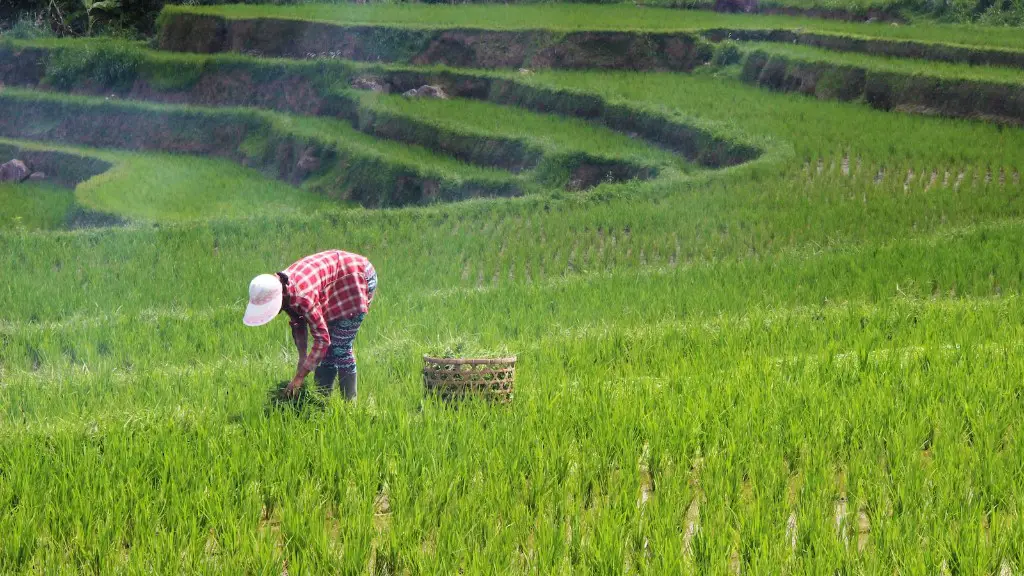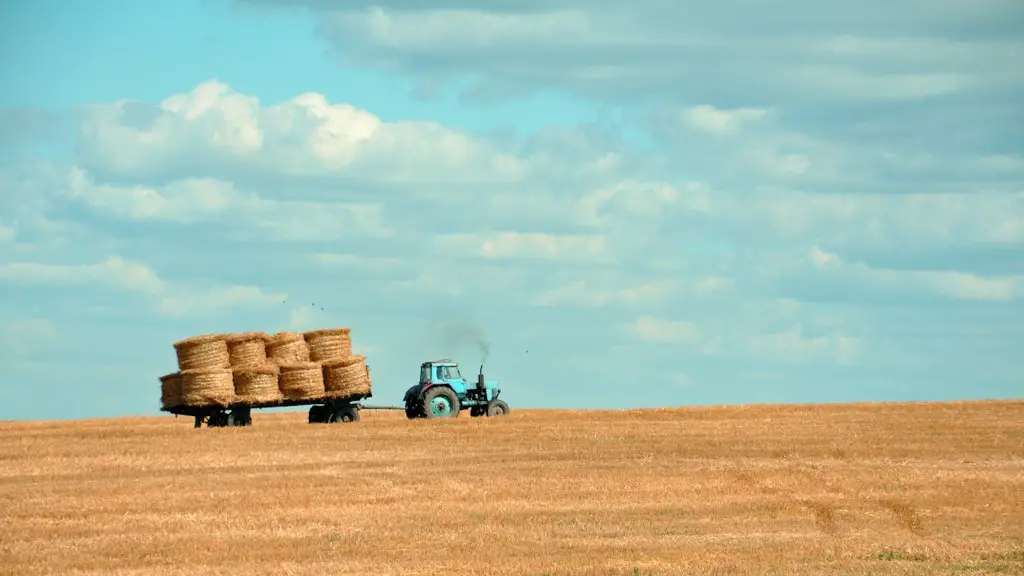Practicing agriculture on mountains is not an easy endeavor. Contrary to common belief, it takes careful, complex considerations to succeed in cultivating land on hillsides and ridges. Not only do mountain soils tend to be unyielding, but other constraints like cold temperatures, persistent winds, and limited water availability can make it difficult to maintain profitable agricultural activities. The following will briefly discuss these and other challenges associated with farming on mountains.
One major hurdle is the lack of arable land. Mountains generally feature rocky soils that can be difficult to cultivate, leaving less space for crops. Stones, boulders, and rocks cover much of the soil and prevent people from growing and harvesting crops efficiently. These stony soils are also quite poor in fertility, making it even tougher to succeed in mountain agriculture.
Less sunlight exposure is another issue agrarianists face on mountains. Cool and long winters and heavy cloud coverage can prevent crops from getting the necessary nutrients, leading to underdevelopment and stunted growth. Moreover, the high altitude can aggravate the long-term effects of the reduced exposure, making it hard to benefit from mountain agriculture.
In addition, carrying out farming activities on mountains is greatly limited by their higher elevations. The air gets thinner, dryer, and colder as we climb higher, all of which can affect the health of crops near the summit. Moreover, winds on steep mountain slopes can be extremely powerful and cause substantial losses in crop yields. Other unpredictable weather conditions can also make it difficult to manage and maintain agricultural productivity.
Another challenge of mountain farming is the risk of environmental degradation. High mountains are very fragile and are particularly susceptible to human alterations. Thus, when trying to cultivate the land, the risk of damaging it increases greatly, resulting in a loss of biodiversity and ecological health. Furthermore, the negative effects of human activities such as deforestation and overgrazing can add significantly to soil erosion and land degradation. While growing crops on mountains can make economic sense, it is essential to have measures in place to guard against any detrimental consequences.
Finally, it’s worth noting that mountain agriculture is complex not only because of the environment but also because of the people involved. Mountainous regions often have smaller communities and limited infrastructure, so providing effective support and assistance to farmers can be tricky. Resources are often scarce, and access to reliable education and training can be difficult to come by, further making labor management a major challenge. Negotiating agreements in a fair manner and sending skilled professionals to these areas is essential for successful agricultural operations.
Soil Quality
Soil quality is a critical aspect of mountain agriculture and poses a major challenge for farmers. Mountain soils are usually thin and non-fertile, which can significantly limit crop production. In addition, soil texture in mountains can vary greatly between ridges, ravines, and hillsides, such that effective management of cultivation may be difficult to achieve. Aside from soil fertility, water availability is also an issue due to higher elevations. With sparse water resources available, infrequent rainfall, and an intricate irrigation system, farmers may struggle to maintain adequate production.
Stability
Another factor that makes mountain agriculture difficult is the lack of stability for production. Crops grown in mountain regions are usually grown for subsistence purposes, given their reliance on the environment for sustenance. Thus, seasonal variations and climatic conditions can disrupt agricultural activities in no time, leading to deterioration of output in a short span of time. With more frequent and harsher effects of climate change, farming on mountains is made even more difficult.
Technological Limitation
Technological advancement has made it easier to cultivate hillside land, but mountains are still at a disadvantage in some areas. Slope stability is one such example, where the need to accommodate steep terrain with machinery has led to limited usage of technologically advanced equipment. Additionally, difficulties in transportation might prevent agrarians from utilizing advanced, modern farming techniques, hampering overall productivity.
Social and Economic Challenges
The social and economic situation in mountain areas can also add to the complexity of mountain agriculture. Most mountain regions lack resources, lack infrastructure, and have struggling economies, which can all further inhibit production. Additionally, population pressures tend to be greater in mountain regions, leading to overgrazing and deforestation, which in turn deplete soil nutrients and contribute to land degradation. Consequently, their capacity to produce food and other products can be affected, leading to more challenges and constraints for farmers.


